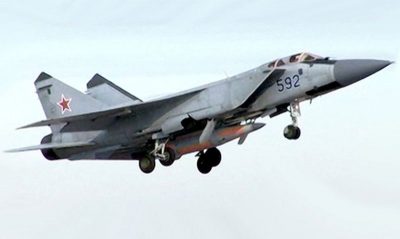US to Relocate Its Warplanes to Intimidate Moscow and Beijing

All Global Research articles can be read in 51 languages by activating the Translate This Article button below the author’s name.
To receive Global Research’s Daily Newsletter (selected articles), click here.
Follow us on Instagram and Twitter and subscribe to our Telegram Channel. Feel free to repost and share widely Global Research articles.
***
US weapons abroad are being relocated in line with Washington’s new strategic priorities. According to recent reports, the US will send old and outdated attack aircraft to the Middle East, replacing the modern and advanced aircraft that are currently stationed in the region. The goal is to transfer the most efficient military equipment to Europe and the Pacific, where it can eventually be used against Russian and Chinese forces – which are currently the main concerns for the US government.
The data was shared in an article published by the Wall Street Journal (WSJ) on March 21. According to information obtained by the authors, there is a plan to redistribute the planes in April. It is planned that aircraft of the type A-10, an older and less efficient model, will be sent to American bases in the Middle East. WSJ sources inform that the Pentagon considers such planes to be strong enough to protect US interests in the Middle East, therefore there is no need for more modern and equipped jets.
“The imperative is to get the most suitable aircraft to the Pacific for the higher threat challenges (…) The A-10 is still relevant to the mission CENTCOM (United States Central Command) flies over the Middle East”, Larry Stutzriem, a retired Air Force major general, told WSJ.
There is still a lack of official and more concrete information on the subject, but, in fact, this move was already expected. The Middle East is no longer part of the focus of attention in American foreign policy today. In the midst of a proxy war with Russia and the imminent emergence of a conflict with China in Taiwan, it is expected that more and more modern war equipment will be transported to regions close to Russian and Chinese territories.
According to the most recent issue of the National Defense Review, published by the Pentagon last year, China would be a kind of “pacing threat.” This means that the US sees China as a danger, but at the same time considers the threat “under control” – suggesting that Beijing is being closely “monitored”. Also, in recent speeches, US Secretary of Defense Lloyd Austin repeatedly corroborated this thesis, emphasizing the “Chinese threat”.
Regarding Russia, a country that is already the victim of American aggression – through the Ukrainian neo-Nazi proxies -, the same document states that Moscow would be an “acute threat”. This means that the rivalry between the countries would be something far beyond the mere collision of strategic interests, being also related to an antagonism of values. This would “justify” exceptional measures in search of increasing American military capacity against Russia.
For these reasons, it is likely that the next few months will see a wide redeployment of forces by the Pentagon. All sorts of modern, sophisticated, and efficient weapons may be located as close as possible to Russian and Chinese borders. Some sources claim that F-35 fighters are about to be sent on a large scale to Europe and the Pacific. This happens, of course, in addition to the official and regular arms supply that already takes place with the enemy states of Russia and China. So, a new wave of militarization is starting, and certainly will not end anytime soon.
Obviously, this wave will not end US military campaigns in the Middle East – nor in other regions where Washington maintains troops. There is a concern on the part of the US to avoid the loss of territories that are already under its military domain. After victory of the Taliban in Kabul, the image of the American Army among global public opinion was strongly shaken. And given the imminent defeat of pro-NATO forces in Ukraine, there is concern on the part of the Pentagon that anti-US rebellions will arise around the world, demanding an end to territorial occupation or the handover of military bases to local governments. For this reason, certainly these moves are calculated in a very careful way. It means that, in the face of the emergence of possible new conflict situations, more redistributions of weapons may be made, always in accordance with the updates of American strategic interests.
On the other hand, with these mobilizations becoming clear, the tendency is for Russia and China to prepare themselves for an eventual situation of open conflict. More than that, the greater the American pressure, the more the two countries tend to deepen their bilateral cooperation, which may adopt clearer military contours soon. And given the many reports of problems with the US defense industry and cases of corruption and financial speculation in the military-industrial complex, there are many doubts about the US capacity to face the integrated Russian-Chinese alliance.
*
Note to readers: Please click the share buttons above. Follow us on Instagram and Twitter and subscribe to our Telegram Channel. Feel free to repost and share widely Global Research articles.
Lucas Leiroz is a journalist, researcher at the Center for Geostrategic Studies, geopolitical consultant. You can follow Lucas on Twitter and Telegram.
Featured image is from Strategic Culture Foundation

